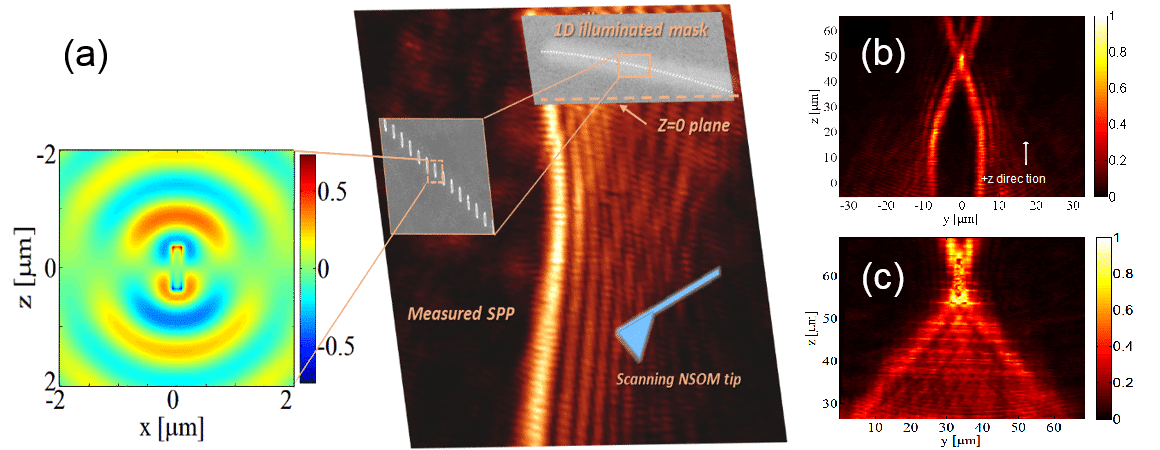
Polarization Switchable Near Field Plasmonic Beam Shaping by Optical Nanoantennas
We Demonstrate the use of Optical Nanoantennas for Polarization Controlled Plasmonic Beam Shaping. The Nanoantenna Properties Enable the Realization of Complex and Multi-Functional Plasmonic Elements
Coupling light to surface plasmons, and shaping the plasmonic wave-front present unique challenge which origin from the wave-vector mismatch of light and surface plasmons. Therefore different coupling techniques were suggested, ranging from utilization of gratings and prisms to near field probe and nanoparticle excitation [1]–[4].
In this study we present a method for coupling and shaping surface-plasmon-polariton (SPP) beams with chains of rod and cross shaped nanoantennas which form functional plasmonic phase masks. Specifically, we present design criteria for generating arbitrarily self-accelerating SPP beams, demonstrate experimentally a number of illustrative examples and show that this method enables to achieve almost twice as much higher acceleration rates compared to those previously reported using a standard grating mask. In addition we show how the polarization selective coupling mechanism of the nanoantennas allows us to obtain intensity modulation of these self-accelerating beams, and to create a dual focii plasmonic lens element that switches intensity levels between two focal spots on the metal surface.
Fig. 1(a) illustrates the experimental setup. A chain of nanoantennas are designed and oriented in a specific way, launching an SPP with a controlled phase. The mask (grey insets) is illuminated with polarization controlled laser (λ=1064nm) from above and the SPP is measured with a near field scanning optical microscope (NSOM) probe. The image is an experimental result of a parabolic caustic beam, generated from this mask. Left image shows a simulated nanoantenna under illumination, generating a dipole-like field distribution. Fig. 1 (b) and (c) shows the experimental results of the bottle beam and lens elements, respectively.

[1] P. Zhang, S. Wang, Y. Liu, X. Yin, C. Lu, Z. Chen, and X. Zhang, Opt. Lett., vol. 36, no. 16, pp. 3191–3, Aug. 2011.
[2] P. E. Landreman and M. L. Brongersma,. American Chemical Society, 07-Jan-2014.
[3] B. Hecht, H. Bielefeldt, L. Novotny, Y. Inouye, and D. Pohl, Phys. Rev. Lett., vol. 77, no. 9, pp. 1889–1892, Aug. 1996.
[4] V. Coello and S. I. Bozhevolnyi, Opt. Commun., vol. 282, no. 14, pp. 3032–3036, Jul. 2009.
oria@post.tau.ac.il
Powered by Eventact EMS